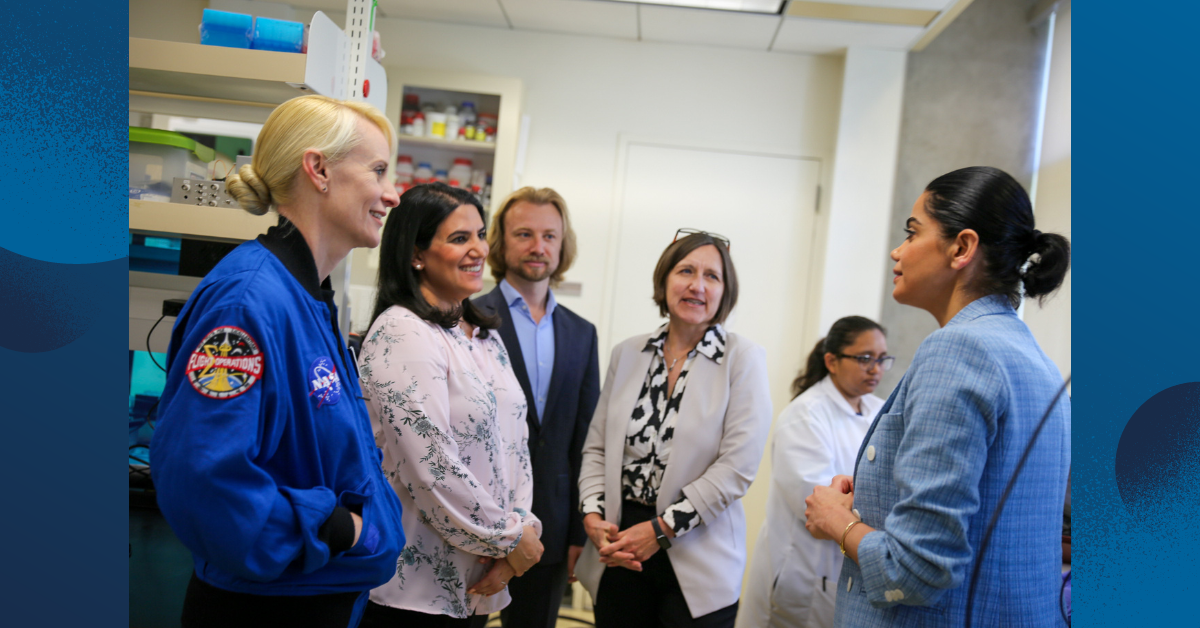Alumna Astronaut Kate Rubins On Advancing Human Health from Space
Story by:
Published Date
Article Content
NASA astronaut Kate Rubins ‘99 recently visited UC San Diego to participate in a panel discussion alongside renowned leaders in space technology and health. Hosted by Kiana Aran, an associate professor of bioengineering, and UC San Diego’s Institute of Engineering in Medicine, the symposium offered insights into how research conducted in space can be translated into applications that keep humans healthy on Earth.
The event featured a presentation from Rubins as well as from Yasaman Shirazi, Chief of Space Biosciences at the NASA Ames Research Center. Following their talks, Alex Nemiroski, CEO of BioNexus and former director at PacBio and Illumina, and Chantal Darquenne, UC San Diego School of Medicine professor and former president of the International Society for Aerosols in Medicine, joined the stage for a panel discussion and audience Q&A.
From Space to Earth: Unveiling New Insights
"This is probably the world’s most beautiful research library," said Rubins as she began her presentation, set against a screen displaying the International Space Station (ISS) with the twinkling backdrop of outer space. Rubins, a biochemist who earned her undergraduate degree in molecular biology from UC San Diego in 1999, completed her first mission to the station in 2016 and has since conducted hundreds of experiments on the ISS.
As part of that mission, Rubins made history as the first person to sequence DNA in space. She is currently preparing for NASA’s Artemis III mission, which will land astronauts on the moon’s surface.
During her presentation, Rubins discussed human health and research in microgravity, highlighting how these insights gained from experiments conducted on the ISS can help address Earth-bound challenges. She also discussed her work in genomics—the study of an organism's genetic material—and how microgravity influences the design and engineering of devices used in space.
“The ISS is a really incredible research outpost that's available to humanity,” said Rubins. “There we have what we call microgravity … essentially every experiment on the space station is in free fall continuously. What that allows you to do is actually start using gravity as a variable in your experiment.”
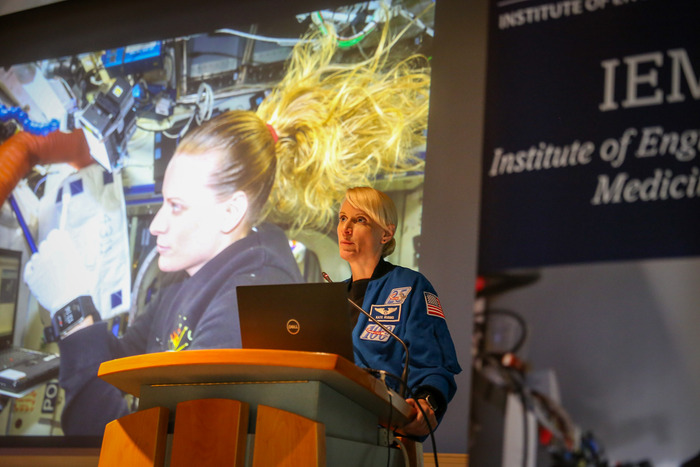
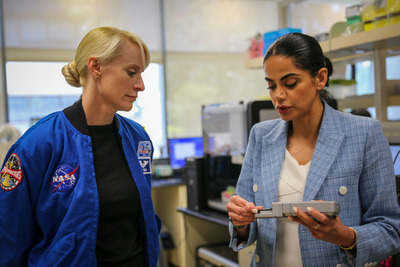
She recounted the momentous occasion when she sequenced DNA in space for the first time, sharing with a laugh that it was "the most terrifying experiment I have ever done in my life.” The successful experiment, which had been in development for two years and conducted in front of thousands on a global stage, paved the way for in-flight identification of microbes and bacteria on future missions.
Rubin also discussed the human physiological experiments she conducted on the ISS, where she explored the effects of microgravity on bone and muscles, the immune system, the heart and more. For example, there is a decrease in the quality of the immune system where effects like reactivation of viruses occur. Bones and muscles also degrade as the body adapts to microgravity. A major takeaway: the body adapts incredibly well to microgravity.
“It's use it or lose it for everything in human physiology,” said Rubins. “If you don't have a reason to have strong bones, why would you waste these calories and energy expenditure maintaining your bone structure? It is no longer useful—the body knows that because there is a lack of stimulation.”
Now, as NASA prepares for future missions to the Moon and Mars, Rubins shares that engineers are shifting their thinking to design devices that can address challenges such as harsh lunar conditions, power limitations and uncertain internet connectivity as astronauts venture further into outer space. By engineering robust and adaptable devices, researchers can help ensure they function effectively in both space and in resource-limited environments on Earth.
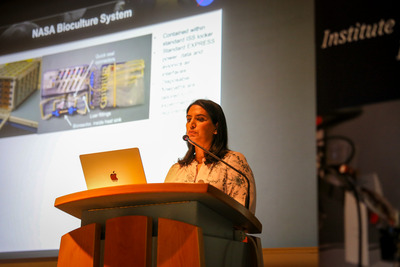
Exploring Human Health in Space
When astronauts are in space and away from Earth's gravity, they experience various changes that may affect their health. To address questions about how space’s environment alters the body, scientists at NASA’s Ames Research Center lead projects that contribute to NASA's ongoing exploration of the solar system and beyond.
“The type of work that we do at NASA Ames—and across NASA in general—is to learn about the responses of the physical and biological systems in extreme environments,” said Yasaman Shirazi, the center’s chief of Space Biosciences.
Shirazi discussed the model organisms, such as fruit flies and rodents, and related technologies that have been sent to outer space. Fruit flies have a high degree of genetic similarity with humans, she explained, making them ideal for research that has led to better understanding human diseases such as Parkinson’s and Alzheimer’s. To date, there have been six Nobel prizes for work that uses fruit flies to better understand human physiology and biology.
Looking ahead, Shirazi and her team are pioneering technologies to help sustain life beyond the ISS, preparing for missions to Mars and the Moon. These efforts include developing methods for food production in space and closed-loop life support systems that help process waste products like wastewater into useful resources.
Following the pair of presentations, the four experts participated in a panel discussion and Q&A session moderated by Kiana Aran, associate bioengineering professor at the UC San Diego Jacobs School of Engineering. Attendees had the opportunity to learn about how each participant got their start in the industry, where each expert shared their earliest inspirations.
For School of Medicine professor Chantal Darquenne, a childhood moment in Belgium sparked a lifelong fascination with space. Her passion for outer space ignited when her father made her watch the five-minute TV sequence of the moment the first astronaut walked on the moon. She completed her undergraduate degree in mechanical engineering and her doctorate in applied sciences in Belgium before moving to UC San Diego for a postdoctoral fellowship focused on studying lung function in space. This research solidified her career path, leading her to become the president of the International Society for Aerosols in Medicine and to spearhead research on topics such as lung ventilation and upper airway dynamics.
Alex Nemiroski, CEO of BioNexus, was introduced to the wonders of space through his grandfather, who designed space suits for Russia’s space program in the 1960s. This family connection inspired Alex's early fascination with science. From the age of five, he knew he wanted to be a scientist, particularly interested in the interface between technology, engineering, biology and medicine. He earned a physics degree from Cornell and a doctorate from Harvard, initially focusing on theoretical physics before shifting to biomedical applications. After a successful tenure at Illumina and growing a department at a startup, Alex founded BioNexus where he advances the development of bio-tools and medical devices.
As the symposium concluded, it was clear that the intersection of space research and health advancements holds endless possibilities, with experts like Rubins, Shirazi, Darquenne and Nemiroski leading the charge. Their innovative work continues to push the boundaries of human knowledge and capability, both in space and on Earth.
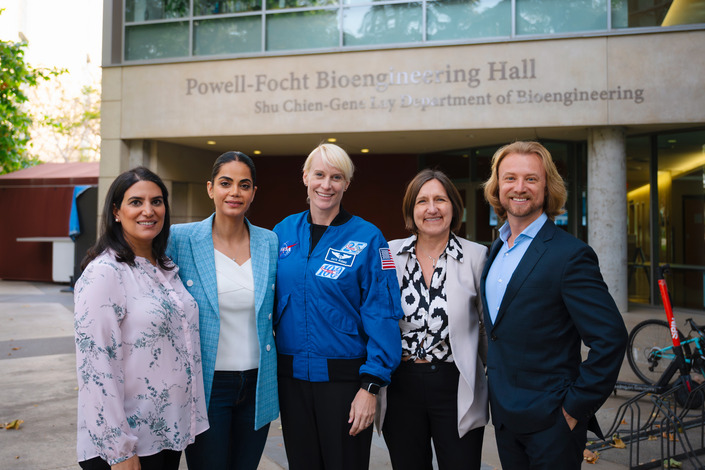
Share This:
You May Also Like
UC San Diego is Strengthening U.S. Semiconductor Innovation and Workforce Development
Technology & EngineeringStay in the Know
Keep up with all the latest from UC San Diego. Subscribe to the newsletter today.
